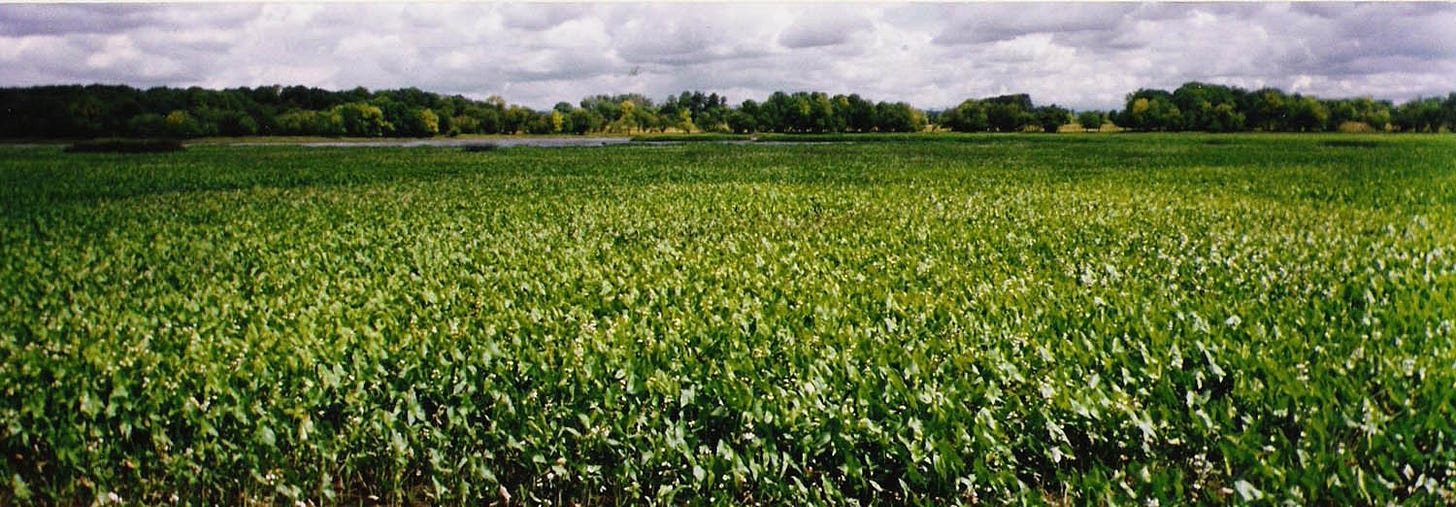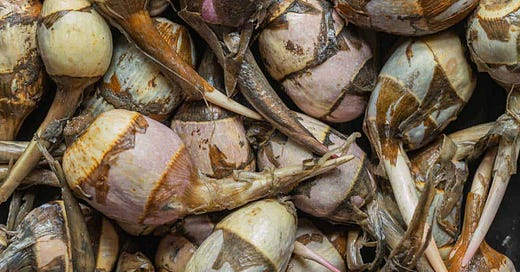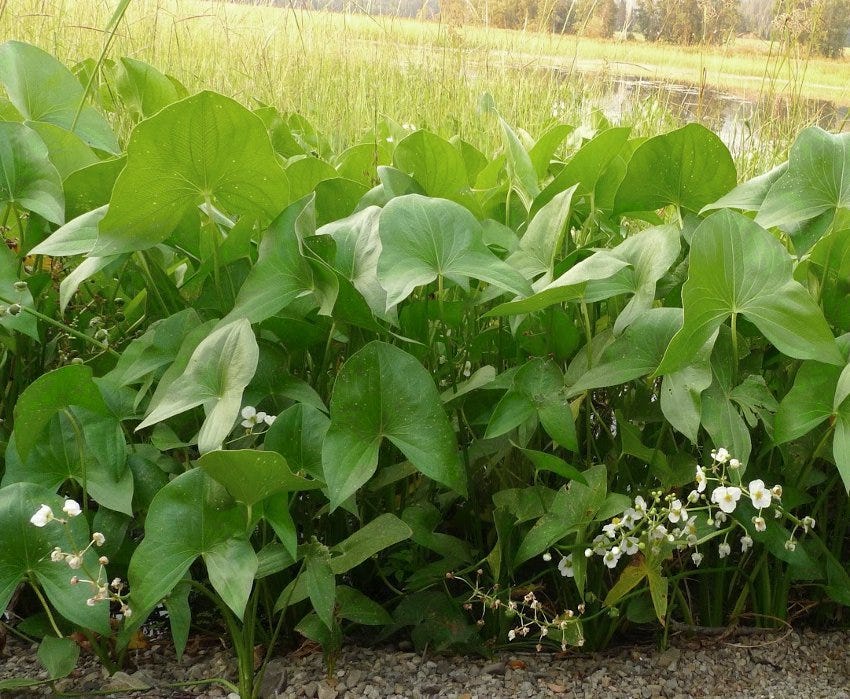Wapato: The Incredible, Edible Duck Potato
Once a foundational piece of North American civilization, this remarkable plant deserves a comeback
One of my major initiatives for this summer is to incorporate more native plants into my food forest. To that end, I cold stratified a ton of seeds over the winter and have been sprouting them in batches since last frost.
It's a major effort, but one that I increasingly feel is absolutely essential. I'll write a longer piece explaining why I think permaculture has missed the mark on natives vs invasives, but broadly speaking, native plants have spent thousands of years adapting to their specific ecological niche. As a consequence, they're really good at what they do.
Planting them is not just a feel-good exercise; it's the best way to build a resilient, efficient food system that doesn't require loads of inputs. And unlike non-native and invasive plants, natives offer crucial ecosystem services that directly support the yield and resilience of any productive system.
One such plant—rarely discussed now—grows in the muck, proliferates rapidly, and supports humans and wildlife alike.
Wapato
“The most valuable of all their roots is…The Wappetoe, or bulb of the Sagitifolia or common arrow head, which grows in great abundance in the marshey grounds of that butifull and fertile vally on the Columbia...This bulb forms a principal article of trafic between the inhabitents of the vally and those of [the] Sea coast.”—William Clark, January 22, 1806
"Wapato" is the Chinook Jargon name for any species in the Sagittaria family, attractive freshwater plants that form small, delicious tubers in the banks of ponds, creeks, rivers, and wetlands. Also called "arrowhead" due to the shape of their upright leaves, several species are native to North America (I've personally planted Sagittaria latifolia) and once served as a staple food across the continent prior to European colonization.
In fact, it's no exaggeration to say that wapato was once a foundational piece of North American civilization. Vast water gardens spread across countless acres were filled with wapato, the nutritious tubers forming a core part of the local diet. The tubers keep well, which also made them a valuable trade commodity.

Wapato is not famine food. The tubers are really tasty: they're like a sweet chestnut with the texture of a somewhat crunchier potato. They require little work to prepare and they can be roasted, fried, baked, or shredded into a hash brown-like cake. Essentially, anything you can do with a potato, you can do with wapato.
Wapato is a very low-maintenance perennial, so once it's planted, there's really nothing to do except harvest. That's traditionally accomplished by digging around in the muck with your toes and pulling them free. The tubers float, so it's a simple matter to knock them loose and then collect them from the surface. Any you miss just form new plants the next year, keeping the wapato patch strong.
Visually, everything about the plant is attractive: the leaves are sculptural and tropical-looking, the flowers are delightful, and the texture of a colony on the water is lovely. The colonies are also positively humming with life: wapato forms a dense cover, which prevents evaporation and provides ample habitat for a variety of organisms.





